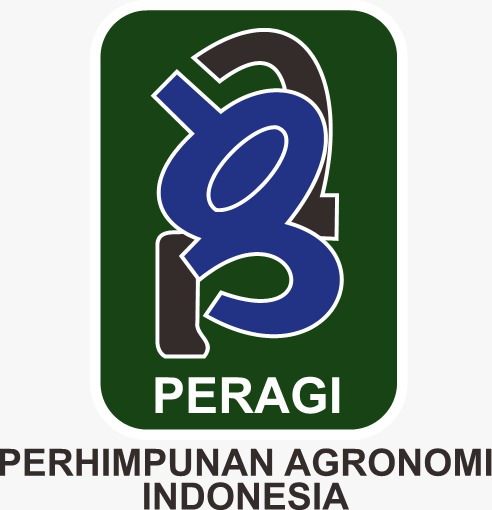Evaluation Of Land Capabilities For Coffee And Durian Crops To Sustainable Agriculture
Abstract
The utilization of land that is not corresponding to its capabilities will accelerate land degradation. Therefore, in this study, the land capability was assessed to determine land capability classes and land use directions for applying sustainable agricultural systems in coffee and durian cultivation areas in the Wonosalam region, Jombang, East Java. The procedures included field observations, soil sampling, and laboratory analysis. Soil samples were taken at two depths, 0-30 cm and 30-60 cm, carried out by taking samples at two different points, then analyzed in a composite manner. The results showed that the class of land capability for planting coffee and durian was in class VII, which had a limiting factor in the form of slopes. Limited grazing and nature reserves are the focus of class VII land-use guidelines so that the land use direction follows the characteristics of the nature reserve and the principles of sustainable agriculture. Concerning long-term agriculture, we need to use conservation strategies both vegetatively and mechanically. Thus, the land that is the research site will be able to maintain its carrying capacity and minimize the decline in land quality and quantity on land use in the Wonosalam, Jombang area.
Downloads
References
Abdelrahman, Mohamed A.E., A. Natarajan, and H. Rajendra. 2016. "Assessment of Land Suitability and Capability by Integrating Remote Sensing and GIS for Agriculture in Chamarajanagar District, Karnataka, India." Egyptian Journal of Remote Sensing and Space Science 19 (1): 125–41.
Ariyanti, M., Yahya, S., Murtilaksono, K., Suwarto, S., & Siregar, H. H. (2016). Pengaruh tanaman penutup tanah Nephrolepis biserrata dan teras gulud terhadap aliran permukaan dan pertumbuhan kelapa sawit (Elaeis guineensis Jacq.). Kultivasi, 15(2), 121–127. https://doi.org/10.24198/kultivasi.v15i2.11889
Arsyad, S. 2010. Konservasi Tanah dan Air. IPB. Bogor.
Choudhury, M. ., & Das, S. (2015). An Integrated Geo-Spatial Studies for Land Capability Assessment of Agricultural Field Especially for Paddy Cultivation. Asian Journal of Geoinformatics, Vol. 15(2).
Erfandi, D. (2016). Aspek Konservasi Tanah dalam Mencegah Degradasi Lahan pada Lahan Pertanian Berlereng. Pengembangan Teknologi Pertanian, September, 128–140.
Ginting, S. (2019). Peran bahan organik dalam rehabilitasi lahan bekas tambang nikel di sulawesi tenggara. Jurnal Universitas Halu Oleo, 1–9.
Hantarto, R.K. (2017). Analisis Kemampuan Lahan untuk Arahan Penggunaan Lahan Bidang Pertanian di DAS Jono, Kecamatan Piyungan, Kabupaten Bantul, Daerah Istimewa Yogyakarta. Universitas Muhammadiyah Surakarta.1-26
Ippolito, T. A., Herrick, J. E., Dossa, E. L., Garba, M., Ouattara, M., Singh, U., Stewart, Z. P., Vara Prasad, P. V., Oumarou, I. A., & Neff, J. C. (2021). A comparison of approaches to regional land-use capability analysis for agricultural land-planning. Land, 10(5). https://doi.org/10.3390/land10050458
Isra, N., Lias, S. A., & Ahmad, A. (2019). Karakteristik Ukuran Butir Dan Mineral Liat Tanah Pada Kejadian Longsor (Studi Kasus: Sub Das Jeneberang). Jurnal Ecosolum, 8(2), 62. https://doi.org/10.20956/ecosolum.v8i2.7874
Jambak, M. K. F. A., Baskoro, D. P. T., & Wahjunie, E. D. (2017). Karakteristik sifat fisik tanah pada sistem pengolahan tanah konservasi (studi kasus: kebun percobaan Cikabayan). Buletin Tanah Dan Lahan, 1(1), 44–50.
Kunarso, A., Angga, T., & Syabana, A. (2018). Arahan Konservasi Tanah Berdasarkan Tingkat Bahaya Erosi Di Sub Das Perapau, Sumatera Selatan. Jurnal Penelitian Kehutanan Sumatrana, 1(2), 13–26.
Maryati, S., Eraku, S., & Kasim, M. (2017). Kajian Kemampuan Lahan untuk Pengelolaan Pertanian Berkelanjutan di Kabupaten Bone Bolango Provinsi Gorontalo. Prosiding Seminar Nasional Geografi UMS 2017: Pengelolaan Sumberdaya Wilayah Berkelanjutan, 491.
Mulya, S. P., Suherlan, D., & Pravitasari, A. E. (2019). Dinamika Penggunaan/Tutupan Lahan dan Keselarasannya dengan Pola Ruang dan Daya Dukung Lahan; Studi di Kecamatan Ciater, Kabupaten Subang, Provinsi Jawa Barat. Jurnal Ilmu Tanah Dan Lingkungan, 21(2), 87–100. https://doi.org/10.29244/jitl.21.2.87-100
Ritung, S., Nugroho, K., Kartawisastra, S., & Hikmah, H. (2015). Sumberdaya Lahan Pertanian Indonesia: Luas, Penyebaran dan Potensi Ketersediaan (Issue October). IAARD Press.
Sarminah, S., & Karyati. (2018). Teknologi Konservasi. 109. Samarinda. Mulawarman University Press.
Sudaryanto, T., Inounu, I., Las, I., Karmawati, E., Bahri, S., Husin, B. A., & Rusastra, I. W. (2018). Mewujudkan Pertanian Berkelanjutan: Agenda Inovasi Teknologi dan Kebijakan. IAARD Press, 590.
Sumarno. (2018). Pertanian Berkelanjutan: Persyaratan Pengembangan Pertanian Masa Depan. In Mewujudkan Pertanian Berkelanjutan: Agenda Inovasi Teknologi dan Kebijakan (I, p. 590). IAARD Press.
Wahyudie, T. (2020). Penguasaan Lahan Dan Konservasi Tanah. Malang. Ahlimedi Press.
Wawan. (2017). Pengelolaan Bahan Organik. Buku Ajar, 1–130.
Copyright (c) 2022 Rahastri Rengganis Sukma, Muara Dhika, Avianita Agustiani, Damasa Ines Larrisa, Maroeto Maroeto

This work is licensed under a Creative Commons Attribution 4.0 International License.
Authors who publish with Jurnal Agronomi Tanaman Tropika (JUATIKA) agree to the following terms:
Authors retain copyright and grant the Jurnal Agronomi Tanaman Tropika (JUATIKA) right of first publication with the work simultaneously licensed under a Creative Commons Attribution License (CC BY 4.0) that allows others to share (copy and redistribute the material in any medium or format) and adapt (remix, transform, and build upon the material for any purpose, even commercially) with an acknowledgment of the work's authorship and initial publication in Jurnal Agronomi Tanaman Tropika (JUATIKA).
Authors are able to enter into separate, additional contractual arrangements for the non-exclusive distribution of the journal's published version of the work (e.g., post it to an institutional repository or publish it in a book), with an acknowledgment of its initial publication in Jurnal Agronomi Tanaman Tropika (JUATIKA). Authors are permitted and encouraged to post their work online (e.g., in institutional repositories or on their website) prior to and during the submission process, as it can lead to productive exchanges, as well as earlier and greater citation of published work.







 More Information
More Information



